
I'm Alex Kearney, a PhD student studying Computer Science at the University of Alberta. I focus on Artificial Intelligence and Epistemology.

I'm Alex Kearney, a PhD student studying Computer Science at the University of Alberta. I focus on Artificial Intelligence and Epistemology.
CAD-ing up a plant-wall for my living room. I'm going to put a felt panel filled with tropical plants on the wall. Thinking of using rail lights to give the plants the 'sunlight' they need. I'll use a gutter as a reservoir at the base, and drip-irrigate the plants with an aquarium pump.
If all goes well, it should be fully self-sustaining!
I've added a little subscribe button to my #indieweb site. Anyone using mastodon, or any ActivityPub based site can see my posts. It'll act just like I'm a mastodon user :)
Decentralisation!
On my way to Grace Hopper Conference 2022. Hope to see you there!
Edmonton → Toronto → Orlando, Florida
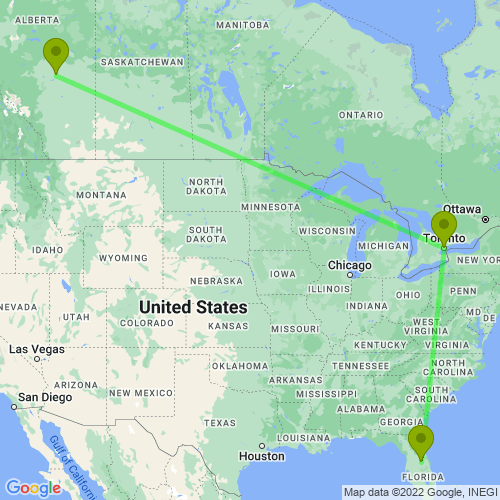
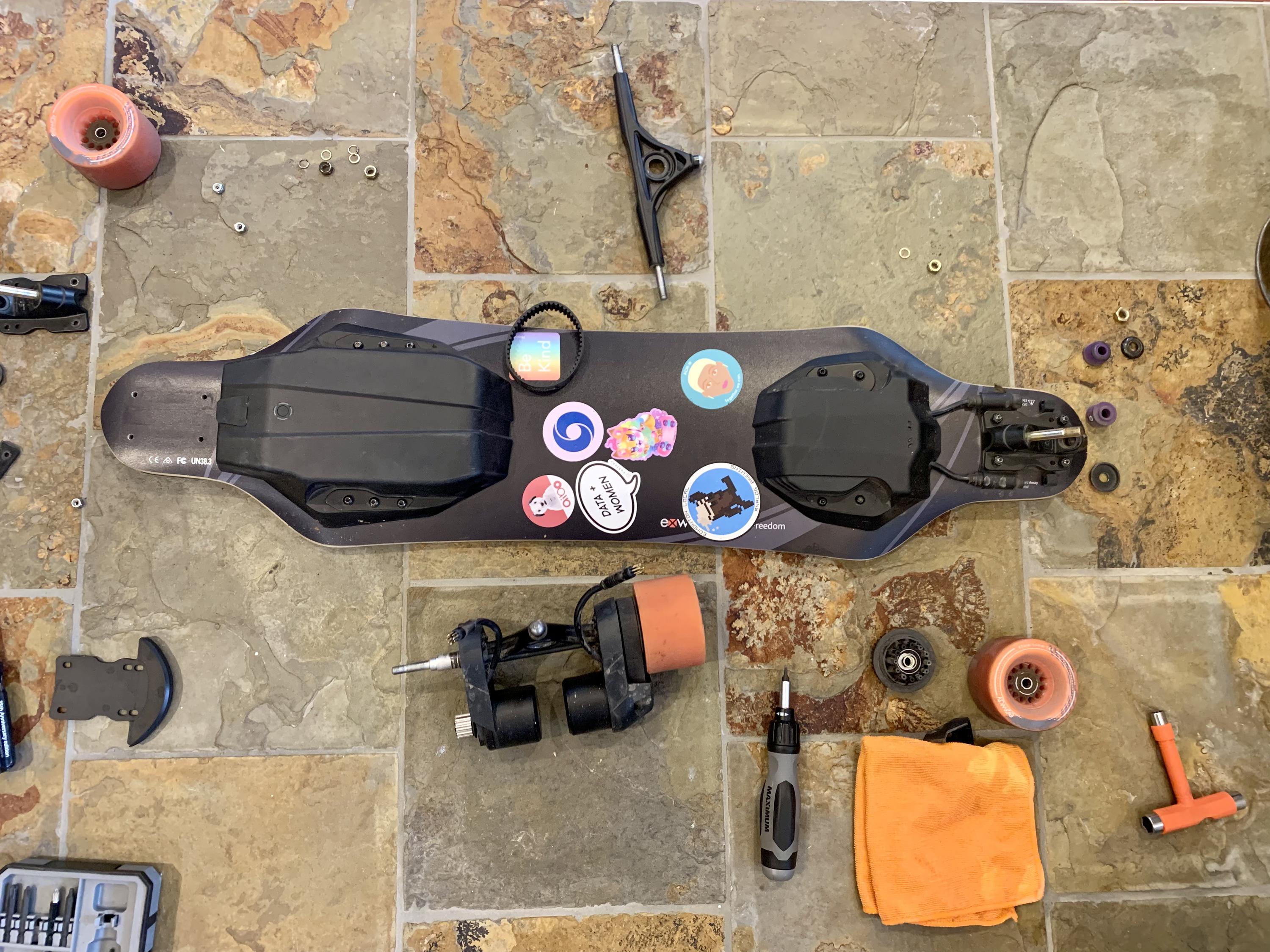
Doing a little spring tune-up on the e-sk8.
Skateboarding is the best hobby I’ve picked up in years. I got an electric board so that I could boot around town, and not have to worry about locking up a bike.
Recently though I’ve been spending a lot more time on my human, powered board. There’s something really nice about aimlessly rolling around town.
I recently had a chat with a couple of friends about style; it inspired me to take a project off the back-burner and turn it into code.
A couple of friends posed a question: is artistic style something that is innate, or cultivated? We spent a few hours digging into art we had created throughout adolescence and into adulthood, picking apart what remained consistent throughout. We sifted through sketchbooks thinking about what may have influenced changes.
To some degree, each of us kept track of inspiration. Katryna went as far as to keep collages and document each of them. I've always admired collages: there's something about collecting, organising, and drawing inspiration from unexpected places.
When I travel, I often take pictures of scenes I find interesting: details that catch my eye. A memorable example: to shelter from the rain in Vienna, I ducked into a chapel. The dreary light diffused through the windows to create a high-contrast baroque scene. Typically overwhelming colours and ornamentation became subdued. I collected the moment for later.
It's not just scenes that I collect. Occasionally I'll find a striking design element or detail and save it for later. A bar I was dining at during a layover in the Houston airport was tiled with mahjong pieces.

In spite of my aesthetic hoarding, I don't really have a method for collecting these images in a sensible way. They sit on my phone, my computer, and my desktop: apocalyptically poor organisation. I'm always on the hunt for inspiration, but don't have a place to enjoy the fruits of this collecting.
aether is a small flask-app with hints of javascript that take a folder on your server and transform it into an infinite scroll of images that are slowly loaded as you cruise by. In my head, these scenes and images were being collected to make some wild reference art-book collage. By making a tiled album, I'm conveying the sense of purpose that I originally intended.

You can find the code in a repo here.
These images are displayed in a haphazard way: the only unifying trait is that each represents something that I liked. In the future I hope to add a more contentful display. I'm thinking that by employing some simple computer vision, I can partition the images by theme and sort them by feel.
I rewatched The Matrix recently with some friends and can't help but wonder what effect it has had on modern discussion. I love the whole trilogy, but the early 00's counter-culture skepticism feels jarring now. What seemed cool, edgy, and enlightened back then, almost echos the conspiracy thinking we have today. The parallels can even be found in online discussion where buying into a particular conspiracy is often described as "taking the red pill". Lily Wachowski at least doesn't seem impressed by the co-opting
This gives the reboot being filmed right now an interesting space though: re-examining the themes that made The Matrix so cool given the current state of the world.
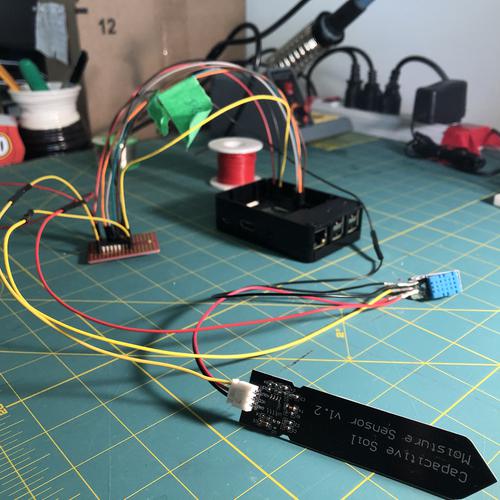
Working on my garden.
New sensors to keep a watch over my plants.
You've got a raspberry pi. Maybe it's a pi 2 or 3 that doesn't have a wifi chip. You bought a USB dongle and plugged it in, but you can't manage to get it to go. The driver that came with the dongle doesn't compile for raspberry pis, and nothing on the pi forums works.
Here's a quick guide for installing the RT8812 driver onto your pi.
1. Get the source kernel installer:
sudo wget https://raw.githubusercontent.com/notro/rpi-source/master/rpi-source -O /usr/bin/rpi-source && sudo chmod +x /usr/bin/rpi-source && /usr/bin/rpi-source -q --tag-update
2. Install bc, a maths package:
sudo apt-get install bc
3. Install the kernel:
rpi-source
4. Fetch the driver by cloning it:
git clonehttps://github.com/Kongaloosh/rtl8821CU
note: this repo points to an 8821 driver. If you need another kind of driver, maybe start with a different repo. You should be able to change the configuration of this repo to suit your needs.
There are now three non-standard things you need to do in order for the driver to work with both your pi and the dongle you've purchased:
a. Figure out the dongle's Manufacturer and product ID.
b. Modify the makefile to specify the dongle the driver is for.
c. tweak the driver makefile to suit the pi
Plug the wifi dongle into the pi and run lsusb to check out what's been plugged into your pi. For instance, when I run it, it looks something like this:
Bus 001 Device 004: ID 0bda:c811 Realtek Semiconductor Corp.
Bus 001 Device 003: ID 0424:ec00 Standard Microsystems Corp. SMSC9512/9514 Fast Ethernet Adapter
Bus 001 Device 002: ID 0424:9514 Standard Microsystems Corp. SMC9514 Hub
Bus 001 Device 001: ID 1d6b:0002 Linux Foundation 2.0 root hub
look at device 04; this is my wifi dongle. If you're having difficulty figuring out which device it is, unplug your dongle and run lsusb again. whichever device disappeared is your dongle! This is the dongle that I purchased.
Take note of the last four digits of the ID. The ID for my dongle is 0bda:c811, so in my case it's c811.
I now know two things about my dongle: the manufacturer (Realtek Semiconductor Corp) and the product ID (c811).
Open os_dep/linux/usb_intf.c using your favourite editor (i.e., nano, vim)
# ifdef CONFIG_RTL8812A
/*=== Realtek demoboard ===*/
{USB_DEVICE(USB_VENDER_ID_REALTEK, 0x8812), .driver_info = RTL8812},
{USB_DEVICE(USB_VENDER_ID_REALTEK, 0xc811), .driver_info = RTL8821}, # my driver!
{USB_DEVICE(USB_VENDER_ID_REALTEK, 0x881A), .driver_info = RTL8812},
You might be lucky. When you look in the file, you may find that there's already a line describing your dongle! If that's so, mosey on to the next step.
If like me, you're not so lucky, you now need to add the usb device you want the driver to interface with in this file. Each section will be prefaced with an ifdef CONFIG_RTLXXXXx. These define the interfaces for each section. They match the interface with the appropriate driver. In this case, I added the driver
open up Make with your favourite editor and change two lines
CONFIG_PLATFORM_I386_PC = y
CONFIG_PLATFORM_ARM_RPI = n
so that they now read
CONFIG_PLATFORM_I386_PC = n
CONFIG_PLATFORM_ARM_RPI = y
This tells the driver to build for our raspberry pi.
Having modified `usb_intf.c and Make, we can continue business-as-usual compiling the driver.
5. Make sure we can run the installation script:
sudo chmod +x install.sh
6. Run the installation script:
./install.sh
7. Load our new module into the linux kernel:
sudo insmod 8812au.ko
sudo cp 8812au.ko /lib/modules/$(uname -r)/kernel/drivers/net/wireless
8. Generate a dependency description:
sudo depmod
You should now be done!!! You can verify this by running iwconfig, which should produce an output like so:
wlan0 IEEE 802.11AC ESSID:"Kongaloosh" Nickname:"<WIFI@REALTEK>"
Mode:Managed Frequency:5.765 GHz Access Point: C4:04:15:10:86:75
Bit Rate:434 Mb/s Sensitivity:0/0
Retry:off RTS thr:off Fragment thr:off
Power Management:off
Link Quality=84/100 Signal level=52/100 Noise level=0/100
Rx invalid nwid:0 Rx invalid crypt:0 Rx invalid frag:0
Tx excessive retries:0 Invalid misc:0 Missed beacon:0
which means your wireless lan is working! Congratulations.
You need to fetch the headers again. There are links below to forum discussions that cover the topic of headers and missing libraries.
Check to make sure that you added your usb interface properly to usb_intf.c. Make sure that you ran things in the correct order. Check to see if you're getting error messages that you missed.
If you've been following other tutorials, and made changes to your pi already, it may behoove you to make a clean install and start from scratch.
I'm going to go to Homebrew website club next week.
Moved to San Francisco for three months. I'm ready for a little bit of a PhD break and a lot of adventure :)
Edmonton International Airport → San Francisco International Airport
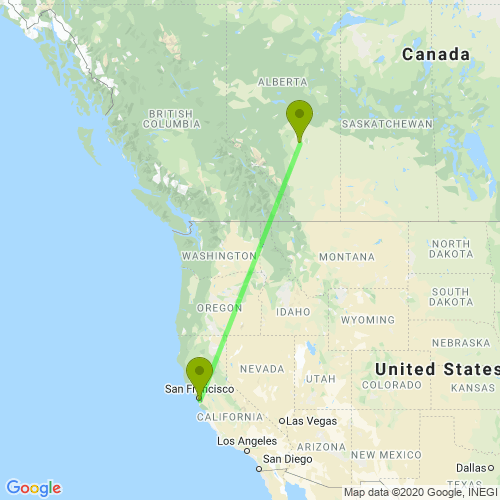
2019 is a wrap Here's what I did last year.
This was a busy academic year. I co-organised a workshop. I took a big leap in my work and submitted some philosophically oriented work to RLDM [1,2], one of which was chosen for a spotlight talk. I received a fellowship from Borealis AI for 2018-2019. I contributed to a few other projects, including a twitterbot for combating online harassment and an exploration of my meta-learning method in a continual learning robotics setting. I ended up presenting.
Most importantly, this year I passed my candidacy exam. The only thing separating me from completing my PhD is my thesis.
I did some career development this year. As I chart out the end of grad-school, I've started queuing up internships to try a few roles out. Oddly, all of the work I've done is research-oriented. I've never had an industrial job before.
I managed to snag a ticket to Grace Hopper Conference. Last year I spent most of GHC managing the group of. While rewarding, I didn't really get to focus on experiencing the conference myself. This year, I got to meet a lot more people, and have a much better idea of how I could fit into different organisations.
I've put off internships mostly because of the interview process. Getting prepped for technical interviews and taking the time to actually sit them means re-directing a significant amount of energy away from the research and projects I'm working on. I can't do everything all the time. I finally bit the bullet this year and did some interviews. Although a small thing, it's a big milestone for me. It's not as scary as I made it out to be. It even paid off: I'm going to be working at Twitter for a few months in the new year and have more interviews queued up.
I worked on more diverse creative projects this year. I tackled projects in some new mediums and some old mediums. I used to be a very active potter in high-school and one of my greatest regrets is not keeping it up. Pottery is one of those meditative arts that takes all of your focus and attention: a good diversion during the crush of grad-school life. This year, Maren and Anna invited me to come join their pottery class. Seven years without practice, but I've still got it.
I tried new crafts including natural dying and embroidery and knitting socks. In the final hours of 2019, I even managed to help Kat spin up a knitting machine. Hopefully the skills from these humble projects will prove useful in 2020.
I got a lot of travelling done this year. There was hardly a month where I wasn't on the move. Some of my trips were big productions, years in the making. I went to Japan for three weeks after my candidacy exam. This was my first trip to Asia and the biggest trip since I went down the Danube in 2016.
Some of my trips were spontaneous. Dylan and Mikayla invited me sea-kayaking around the Johnston Strait, where we saw orcas and waded through the mist.
Most of my trips were tacked onto work-related trips where possible. The workshop in the Barbados had opportunities for me to go diving for the first time in four years. I went to RLDM and spent time meeting up with friends and enjoying the art galleries. I eeked out a chance to see the Tate modern for the first time in ten years during a layover. I presented some of my work in porto and had a chance to explore the city while visiting with a research group. I take the chance to explore where I can get it.
I really improved my photography this year---especially travel photography. I spent a lot more time carrying around a camera, and it shows. Even just slipping my little point-and-shoot in my pocket has provided a lot of opportunities. It helps that Dylan is patient and encouraging: sometimes even joining me to freeze late at night on a quest to get a good shot of the stars.
I picked up development on my indieblog. I started the year off trying to add more social protocols and interface better with federated sites like mastodon. After wrestling with web-specs and confirming, yes, I was implementing them as specified I gave up. I learned a lesson from this: working on more protocols is fun programmings sake. Adding webfingers and trying to doesn't make, nor does it really change the accessibility of my blog.
After learning this lesson, I spent the rest of the year making minor chages to encourage better usability. The bulk of this turned out to be small UI changes to make it more comfortable to post, but I did also add some smaller features.
This year involved a lot travel, and I added a wysiwyg editor to quickly chart out my trips and resolve placenames to geo coordinates.
I wanted to spend more time on academic posts, so I added mathjax for mathematical type-setting on my blog.
I have an impression video is the future, so I added a dead-easy manual way to add videos to my site.
It's these small, quick changes that have proven to be the most useful, but it's had an unexpected consequence...
I didn't do a lot of programming this year and it's a shame. One of the greatest joys in (my) life is programming. There's a clear---and positive---reason why I've done less programming this year: my indieblog is stable. Much of the external programming projects were small incremental additions to my blog. There's not much more I feel like adding. I have all the bells and whistles I need to sustain myself for the time being (although there's always maintenance and refactoring to do). Most of the changes I would want to make would require lots of effort. I started this project midway through university. There's a lot of cruft, cowboy code, and naivete to clear out. I don't have the gumption to do it.
I think it's time for a new big project.
2019 is a wrap Here's what I did last year.
This was a busy academic year. I co-organised a workshop. I took a big leap in my work and submitted some philosophically oriented work to RLDM [1,2], one of which was chosen for a spotlight talk. I received a fellowship from Borealis AI for 2018-2019. I contributed to a few other projects, including a twitterbot for combating online harassment and an exploration of my meta-learning method in a continual learning robotics setting. I ended up presenting.
Most importantly, this year I passed my candidacy exam. The only thing separating me from completing my PhD is my thesis.
I did some career development this year. As I chart out the end of grad-school, I've started queuing up internships to try a few roles out. Oddly, all of the work I've done is research-oriented. I've never had an industrial job before.
I managed to snag a ticket to Grace Hopper Conference. Last year I spent most of GHC managing the group of. While rewarding, I didn't really get to focus on experiencing the conference myself. This year, I got to meet a lot more people, and have a much better idea of how I could fit into different organisations.
I've put off internships mostly because of the interview process. Getting prepped for technical interviews and taking the time to actually sit them means re-directing a significant amount of energy away from the research and projects I'm working on. I can't do everything all the time. I finally bit the bullet this year and did some interviews. Although a small thing, it's a big milestone for me. It's not as scary as I made it out to be. It even paid off: I'm going to be working at Twitter for a few months in the new year and have more interviews queued up.
I worked on more diverse creative projects this year. I tackled projects in some new mediums and some old mediums. I used to be a very active potter in high-school and one of my greatest regrets is not keeping it up. Pottery is one of those meditative arts that takes all of your focus and attention: a good diversion during the crush of grad-school life. This year, Maren and Anna invited me to come join their pottery class. Seven years without practice, but I've still got it.
I tried new crafts including natural dying and embroidery and knitting socks. In the final hours of 2019, I even managed to help Kat spin up a knitting machine. Hopefully the skills from these humble projects will prove useful in 2020.
I got a lot of travelling done this year. There was hardly a month where I wasn't on the move. Some of my trips were big productions, years in the making. I went to Japan for three weeks after my candidacy exam. This was my first trip to Asia and the biggest trip since I went down the Danube in 2016.
Some of my trips were spontaneous. Dylan and Mikayla invited me sea-kayaking around the Johnston Strait, where we saw orcas and waded through the mist.
Most of my trips were tacked onto work-related trips where possible. The workshop in the Barbados had opportunities for me to go diving for the first time in four years. I went to RLDM and spent time meeting up with friends and enjoying the art galleries. I eeked out a chance to see the Tate modern for the first time in ten years during a layover. I presented some of my work in porto and had a chance to explore the city while visiting with a research group. I take the chance to explore where I can get it.
I really improved my photography this year---especially travel photography. I spent a lot more time carrying around a camera, and it shows. Even just slipping my little point-and-shoot in my pocket has provided a lot of opportunities. It helps that Dylan is patient and encouraging: sometimes even joining me to freeze late at night on a quest to get a good shot of the stars.
I picked up development on my indieblog. I started the year off trying to add more social protocols and interface better with federated sites like mastodon. After wrestling with web-specs and confirming, yes, I was implementing them as specified I gave up. I learned a lesson from this: working on more protocols is fun programmings sake. Adding webfingers and trying to doesn't make, nor does it really change the accessibility of my blog.
After learning this lesson, I spent the rest of the year making minor chages to encourage better usability. The bulk of this turned out to be small UI changes to make it more comfortable to post, but I did also add some smaller features.
This year involved a lot travel, and I added a wysiwyg editor to quickly chart out my trips and resolve placenames to geo coordinates.
I wanted to spend more time on academic posts, so I added mathjax for mathematical type-setting on my blog.
I have an impression video is the future, so I added a dead-easy manual way to add videos to my site.
It's these small, quick changes that have proven to be the most useful, but it's had an unexpected consequence...
I didn't do a lot of programming this year and it's a shame. One of the greatest joys in (my) life is programming. There's a clear---and positive---reason why I've done less programming this year: my indieblog is stable. Much of the external programming projects were small incremental additions to my blog. There's not much more I feel like adding. I have all the bells and whistles I need to sustain myself for the time being (although there's always maintenance and refactoring to do). Most of the changes I would want to make would require lots of effort. I started this project midway through university. There's a lot of cruft, cowboy code, and naivete to clear out. I don't have the gumption to do it.
I think it's time for a new big project.
I'm shocked that touch-bars on MacBooks haven't become what internet browser toolbars were in the 2000s: useless emoji and glitter fests.
For the most part they seem to have been ignored.
Recently, I was invited to give a talk at a philosophy workshop co-located with one of the conferences on interdisciplinary science in Porto. I spent close to two weeks in town. While I was mostly focused on work, I did have a chance to dip out and explore the city. Here's my thoughts after walking around town. Here's a list of some of the places that stood out:
Serralves is a contemporary art museum and one of the best galleries I've ever visited. The curation is fantastic; it gives visitors enough context to understand what the artist and the gallery are trying to communicate, without hand-holding the guests. Even if you're not a fan of modern art, Serralves is worth visiting: there's something for everyone.
The gardens surrounding the gallery are lush, and marked with several installations. In the center of the gardens is a fantastic example of art deco architecture: a house with a fountain leading from a cliff up to the main house.
Centro Portugues de Fotografia isn't a place highlighted by travel guides. It's close to all the tourist hot-spots, but receives much less attention.
It's worth a visit.
The centre for photography is a free museum located in a repurposed prison dating back to 1582. They didn't change much. The inner courtyard is a small square with iron bars for windows. The entrance to many exhibits is through heavy doors and bars.
Not all of the exhibits were worth writing home about, but several were exceptional. locating the gallery in a historic jailhouse gives it quirky charm. On the whole, it's a well curated gem close to where most people will be anyways. What's to lose by stopping by?
The Waterfront in Porto is a great place to wander and explore the city. There's an abundance of colourful buildings and neat narrow streets to explore. If you're willing to step off the tourist track, good, cheap food is abundant.
There's a number of wine houses along the shore of the river: a great place to grab a drink while watching the sun set flanked by Porto's iconic bridges.
A great way to get to the waterfront is to walk behind the Center for Photography to a look-out point of the river. From there, you can take steps that carve into the side of the hill down narrow streets that are decorated with the traditional ceramic tiles found in porto and a smattering of street art.
Epoca Porto is a great place for brunch. I had indescribably great eggs on sodabread toast. What was in them? I don't know.
early is a little cafe that seems to be built into an old bank. If you look into the back room, there's an old vault door that's mirrored on the inside. Dylan and I grabbed a bunch of plates to share as nibblies. Their roast cauliflower is the best I've had.
O Calcua is a nice little place close to the centre of town. A group of us went here after the conference I attended, and it was memorably tasty---served family style.
O Comercial is a treasure hidden away in Palacio da Bolsa: a historic stock exchange in the center of town. There's only a handful of tables, so it's a quiet little getaway.
Taylor's Port is the oldest port firm, but it's not worth the trek. If you're interested in boozy drinks, chances are you're probably familiar with winery tours, or have at some point wandered through a distillery. The joy of these tours is getting to see where your favourite libations are made: getting to walk through the process.
You'd think that port--a fortified wine--would be the best of both worlds. Unfortunately, it's little more than a walking tour through one of the historic storehouses. Save yourself the time and drink port at any number of other places in town.
Livraria Lello is a breathtakingly beautiful bookstore. If you are at all interested in visiting, make sure you're one of the first 20 people through the door at the beginning of the day. At any other point in time, it is unbearably packed. It can take two or three minutes to descend the stairs as you weave through all the visitors taking selfies.
While the craftsmanship is excellent, it's near impossible to enjoy when peering through the crowds. It hardly seems safe; I can't imagine how deadly a fire would be with the way they pack tourists in.
Today, I was one of many people picked up to go diving. When I hopped on the van, there was already a lady from Ohio. We chatted it up, and I found out she did software training with doctors. Neat. Next, we picked picked up a couple who spoke french on the way over. After seeing my shirt, they asked me if I was from Alberta. I was shocked to find someone on a dive boat in Japan that recognized Amii: the machine intelligence institute I belong to.
I climbed up to the top deck and chatted with them most of the way to the islands. Serendipity: they were both Canadian diplomats serving in South Korea. The both wanted to know more about AI. Evidently, their work touches on it: Korean investors are keen on Canadian, (and Albertan) AI research. I gave a boat-ride explanation on the differences between different machine learning methods, and how Reinforcement Learning---my favourite branch of AI---differs from many of the more common approaches to machine learning.
Today we did three lively dives: among the spottings were angelfish, clownfish, and sea-snakes. I had never seen clownfish before: one of the sea-creatures on my bucketfish. They were almost whisp-like; sentinels hovering over their anemone, keeping watch.
On our last dive, we went to a location with an abundance of sea turtles. It's always relaxing to watch these graceful creature slip through the currents; however, this dive was shockingly distressing. The dive-sites were heaving with other dive boats, with visitors kitted up to the gills. Almost every person on the other boats had top-of the line cameras with all the external flash-bulbs and lights. Thick gloves; thick booties.
As soon as our group made our descent, we found another group that was laying down on the coral reef. One of the divers was anchored onto living coral to get a shot of a turtle, completely oblivious that he was killing a vital member of his model's ecosystem. Satisfied with their shot, they kicked off the coral, breaking off six inches of stag-horn coral. For all the money poured into their gear, they didn't have even an ounce of buoyancy control.
There were so many disrespectful, dangerous divers. Crowding the marine life, grabbing the coral through the protection of thick, cumbersome gloves. Oblivious to their fins bashing into broad coral fans. If tourists keep treating the reef this way, it wont exist for much longer; ruined for everyone. Most of all, the turtles.
This morning, I opted to do something familar: to retread my steps and go back to the renoir for a cup of coffee.
Afterwards, I trekked out to harajuku. I found the famous street and ambled along. Even at 9 A.M. it was already heaving. The streets were bursting at the seams although much of the street was closed.
I have to admit, while some aspects are wild---e.g., rainbow toasties---the street was otherwise unremarkable.
I focused on brahms path and confirmed a suspicion: it is named after the composer. Trundling down brahms path, Being one street removed, really changed the feeling. Even the smell of lush plants growing on the sides of buildings was nice. I charted out the places I wanted to visit and let interest guide me. When I found something unusual or mundane, I let that impulse guide me.
I found so many neat streets---interesting nooks and crannies. I went to a little coffee shop next to shinjuku. It had low ceilings and beautiful heavy wooden seating. I ordered a slice of cake and a pourover.
The couple sitting next to me seemed pleasant. They commented on my choice of cake. We started to chit-chat and I found out that they were from California, from SanFrancisco. One of them did arts and life reviews and commentary.
We chatted about their career, and the sustainability of the arts community in a city being crowded out by tech. They asked me what I did, and I mentioned I was a grad-student studying AI. One of them worked at GoogleBrain. You can never escape. There is no holiday.
This morning, I opted to do something familar: to retread my steps and go back to the renoir for a cup of coffee.
Afterwards, I trekked out to harajuku. I found the famous street and ambled along. Even at 9 A.M. it was already heaving. The streets were bursting at the seams although much of the street was closed.
I have to admit, while some aspects are wild---e.g., rainbow toasties---the street was otherwise unremarkable.
I focused on brahms path and confirmed a suspicion: it is named after the composer. Trundling down brahms path, Being one street removed, really changed the feeling. Even the smell of lush plants growing on the sides of buildings was nice. I charted out the places I wanted to visit and let interest guide me. When I found something unusual or mundane, I let that impulse guide me.
I found so many neat streets---interesting nooks and crannies. I went to a little coffee shop next to shinjuku. It had low ceilings and beautiful heavy wooden seating. I ordered a slice of cake and a pourover.
The couple sitting next to me seemed pleasant. They commented on my choice of cake. We started to chit-chat and I found out that they were from California, from SanFrancisco. One of them did arts and life reviews and commentary.
We chatted about their career, and the sustainability of the arts community in a city being crowded out by tech. They asked me what I did, and I mentioned I was a grad-student studying AI. One of them worked at GoogleBrain. You can never escape. There is no holiday.
We woke up early to go to Odaiba: an artificial island filled with amusement parks and expo halls. The train to the island had a wonderful view; we dipsy doodled east, crossing a bridge over to the island. Through the dockside cranes you could catch glimpses of mount fuji: a little triangle on the horizon slightly obscured by particulate and capped with snow.
We were on the island to see the Team Epsom Digital Art Museum a concept piece that dwells on themes of nature and industry. We entered into a dark room that erupted into an open space covered in butterflies. There are no maps: there is no set path. We discovered each installation by exhaustively searching through a maze of hallways. I'm still not sure if we managed to even find all the installations.
The first room I found was my favourite: The Nest. You entered by climbing across a rope cat-walk down into a net. We were suspended in the dark above a mirrored floor, giving the impression that you're floating in an endless abyss. Lying down in the nest, you could see a mass of what looked like stars, all flickering in the void.
Once everyone was settled, a few glyphs moving and changing emerged from the darkness. Shapes and sounds whirred around, giving the feeling that you were warping through space and tine.
Getting lost in the museum was immensely satisfying. The whole labyrinth really imparted a sense of wonder. The meticulous sound-scaping and darkness of the museum created a complete, immersive experience.
What caught me the most was how they played with your perception by creating complex projections onto irregular spaces.
Each of the rooms had to be discovered. Subtle cues in the hallways alluded to the presence of another room---for instance processions of sedans of animals marching down the hall.
In the back of one of the rooms, obscured by a sheer curtain, was a tea-house. Using carefully arranged projectors, the chaisu's were decorated with blossoms that slowly blossomed in your tea as you drank it. ONce you finished, or if you disturbed the projection enough, the blossoms blew away.
It was beautiful to watch the cup with the froth---almost as interesting as watching the rest of the room discover their tea. There was a small child sat on a guardian's lap, helping herself to a bowl of matcha icecream. Although the room was dark, you could just barely catch her expression in the reflected light of a field of grass crowing around her icecream bowl.
The space was inspiring.
The struggle of @black_in_ai organizers trying to bring a diverse audience to #neurips reminds me of a point @erica_joy made in an interview:
“We aren’t thinking about the lost time spent having to fight those issues.”
These researchers are providing a service to the community which comes at a cost. We need to be better at acknowledging this and providing support.
Clearly @element_ai is all ready for #neurips . They've got a cute little walkway with some neat #mtl facts and deep learning memes.
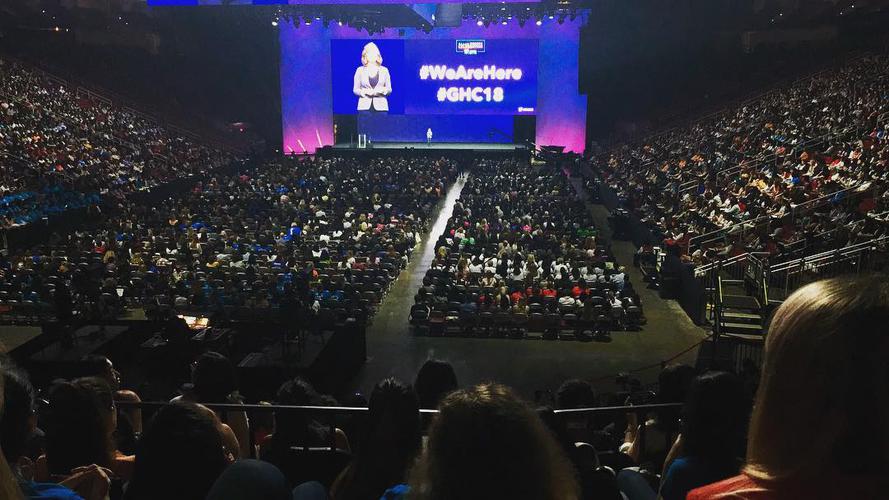
It’s really impressive to see so many women in #tech in the same room for #ghc18 . Even the nosebleeds are filled! #WomenInTech
Really excited to head to my first #GHC2018 tomorrow! Does anyone have advice for how to make the most of it as a first-timer?
Went to Amii's inaugural monthly AI tech meetup and chatted with a bunch of people.
Moved into the Amii office downtown.
Worked on my Camera-ready copy of my AAAI fall symposium paper.
Wrote a proposal for the Distinguished Lecturer Series.
Watched Christopher Robin.
Read Weapons of Math Destruction.
Harvested what was left of my garden.
Finished the skull on my sweater.
Made yogurt!
Are any #indieweb folks heading to #ghc2018 this year? If there's any interest, I'd love to have an ad-hoc homebrew website club!
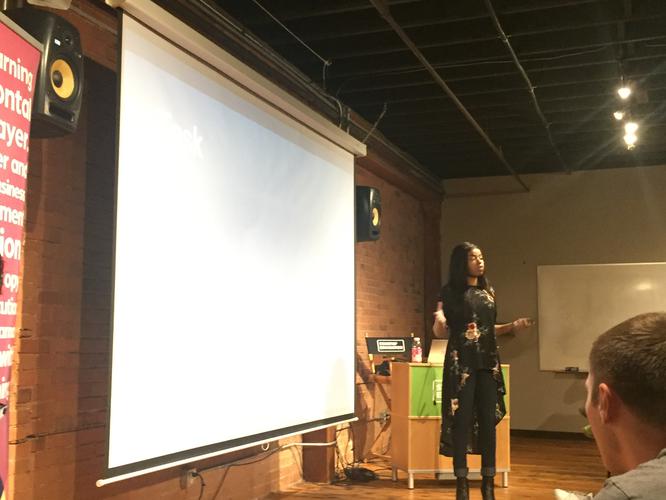
At the wildly talented @melosare’s tech talk at @AmiiThinks’ #AI meetup. Learning about the promise and peril of #ml in medicine.
The room is absolutely heaving! It’s great to see so much interest in #yeg AI 😊 🤖
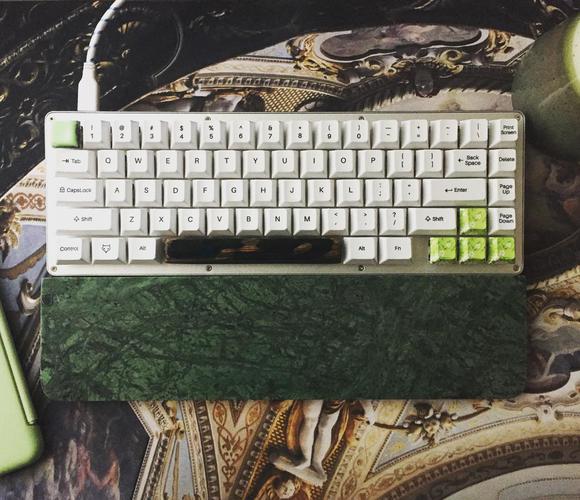
I’ve been waiting a long time for this! My @inputclub white fox keyboard is finally here! So excited to start typing on my hako trues 😍 . . . #mechanicalkeyboard #mechkeyboard #whitefox #tech
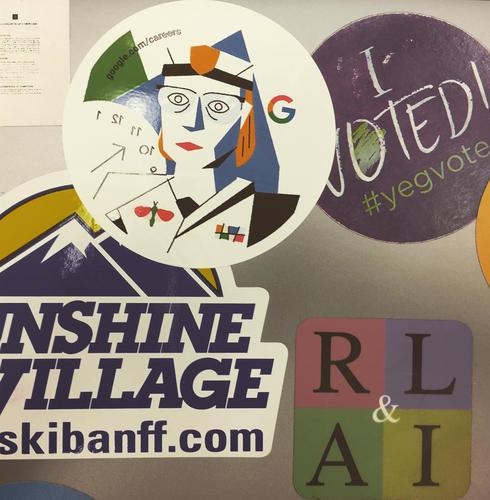
I am unreasonably excited about this Grace Hopper sticker my lab-mate gave to me.
Huh, in the lab we were talking about the prevalence of cutsey names in machine learning research recently. I wonder how much of that is because competing architectures make up a significant portion of research right now.
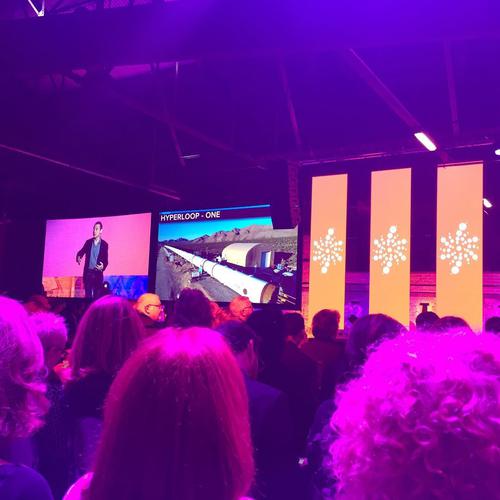
@hyperloopone hype at @peterhdiamandis’ @sucanadasummit talk. #tech #singularity
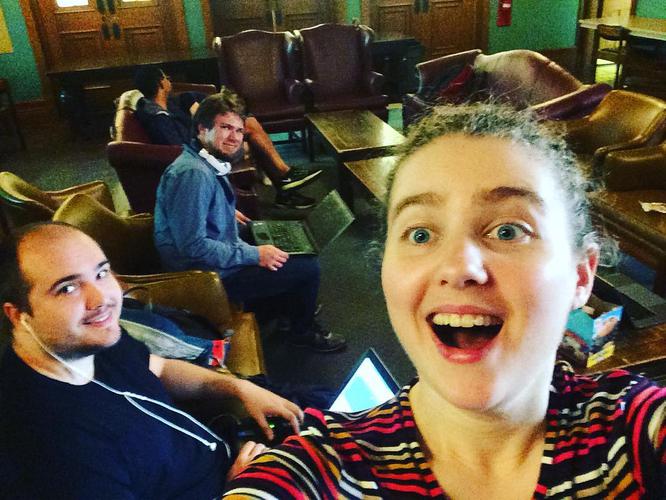
Home brew website club! #indieweb #yeg #homebrewwebsiteclub #tech #web
The nice people at #FibonacciSequins invited me to contribute to their tech-fashion blog. #tech #fashion
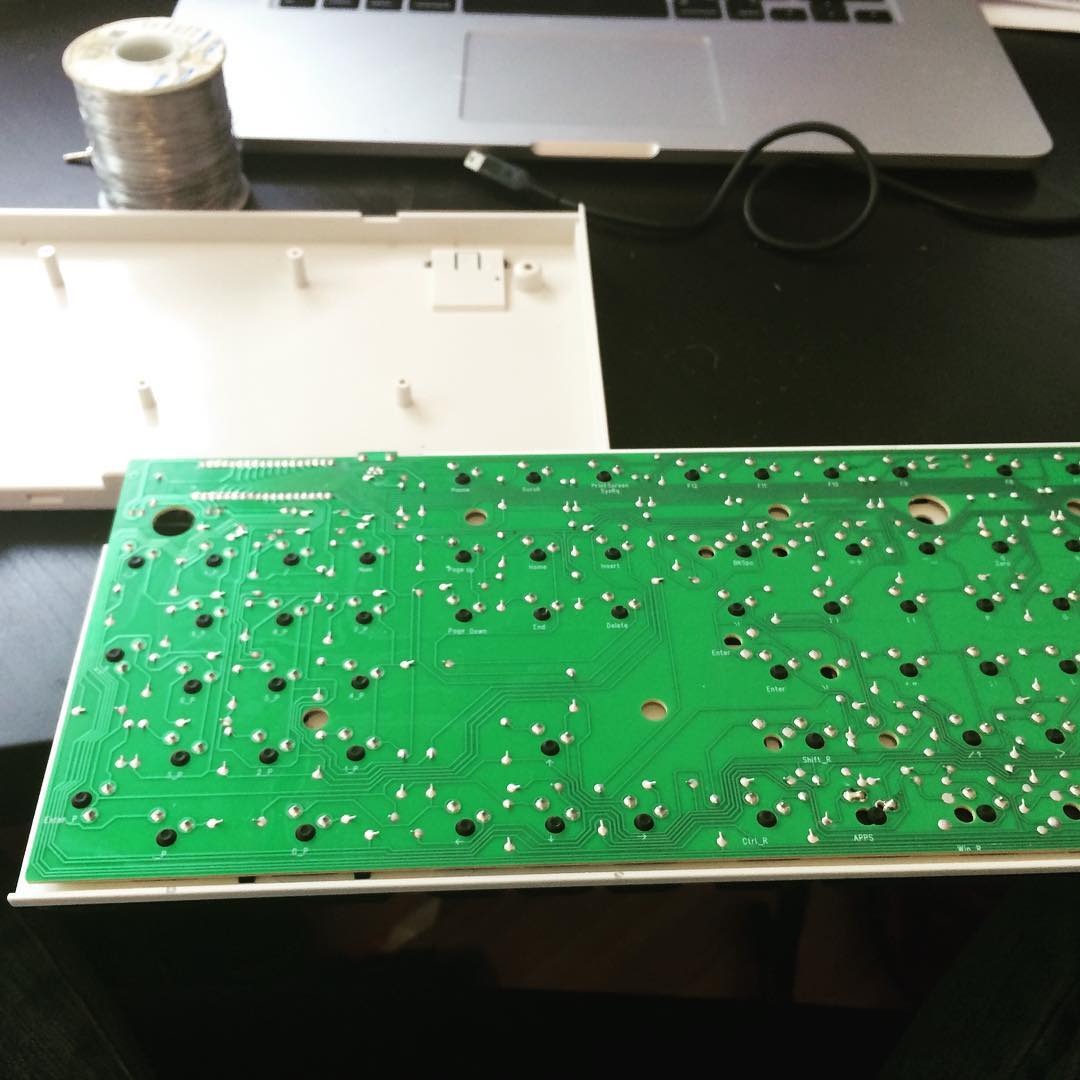
Open PCB surgery to try and extend my poor #cherrymx keyboard. #mechanicalkeyboard #tech
Things I didn't expect to be doing with my afternoon: contributing to a tech fashion blog.
On of the pianists at the chamber music festival was using a tablet for sheet music. #yeg .